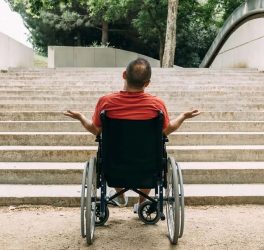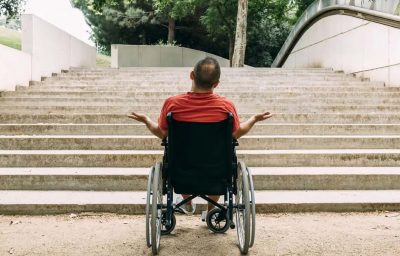
Safety experts are pleading for lawmakers to modify laws regarding the responsibility of evacuating people with disabilities from crisis situations.
Emergency Evacuation Chair specialist, Evac+Chair International, is pressuring those in power to close the legislative gap to promote more accountability and transparency on the evacuation procedures and equipment needed, reported IFSEC Global.
As well, it seeks to educate businesses, building managers and those responsible for fire safety on their safety-related duty in emergency circumstances.
This call to action has been launched during Business Safety Week 2021, Disability Awareness Day 2021 and Fire Door Safety Week 2021 – all of which aim to heighten awareness on safety in the workplace and those with disabilities.
In total, there are 14.1 million people with disabilities in the UK and more than 4.4 million of them are in workplaces. They should be sufficiently safeguarded in the case of an emergency, said Evac+Chair International.
Currently, fire safety regulations do not specify evacuation procedures or equipment for people with disabilities or temporary mobility issues, as a legal requirement in buildings. There is a legal obligation for the person responsible for fire safety to have a risk assessment and measures in place to support the safe evacuation of people from the building, but nothing to specifically outline how one will evacuate those with disabilities.
This is why the company is asking for a redo of the law and is calling on businesses to ensure they have the correct risk assessments and procedures in place to keep everyone safe, despite ability level, in an emergency.
Gerard Wallace, Managing Director of Evac+Chair International, said, “It is vital that businesses know their responsibilities and people with disabilities – whether lifelong or temporary – know their rights around safely getting out of a building in an emergency.
“There is great confusion and a legislative gap and lack of clarity around what business owners and building managers responsible for fire safety need to have in place to properly protect staff, visitors and the public.”
Under the Management of Health and Safety at Work Regulations 1999, legally, businesses must engage in evaluations to identify injury and illness risk, taking action to remove, or manage that risk. For those with an excess of five employees, results should be recorded, while recognizing groups especially at risk such as older, younger, pregnant or employees with disabilities.
Gerard added, “The emphasis has always been on giving disabled people access into buildings, but little thought and planning is paid on how to support people to get out in an emergency.
“We also see a lack of awareness amongst building owners and managers around their responsibilities for people with temporary disabilities or impairments – such as a broken leg or pregnancy. The fact is, they are responsible and could be liable in a worst-case scenario.
“We need to make sure that everyone, whether able-bodied or not, can escape from a building in an emergency situation.”
Nathan Davies, RoSPA’s Executive Head of Policy and Portfolio, said, “The efficiency of an emergency evacuation can be the difference between protecting lives and serious injury or death.
“Therefore, we support any initiative that encourages organisations to put correct measures in place to create workplace environments that are safe for all.”
Lewis Ramsay, Board Member – BAFE Fire Safety Register/former Assistant Chief Officer for the Scottish Fire and Rescue Service, added, “The BAFE Fire Safety Register believes that risk to life safety can be mitigated in many ways. A safe evacuation strategy for all people is one of these, which can greatly benefit firefighters (and other responders) in an emergency.
“BAFE would welcome greater clarification (and promotion) where responsibilities lie for fire safety and emergency evacuation actions, especially for more vulnerable people. This will aid in getting the appropriate systems and provisions in place for a safer built environment.”








